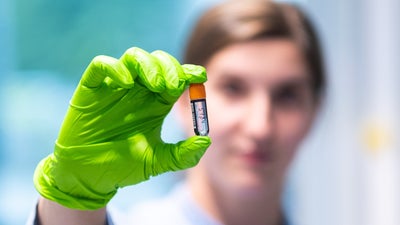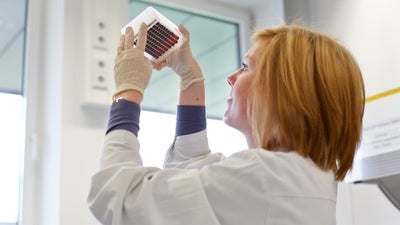Donor search and match
Finding the perfect donor means finding someone with matching HLA characteristics.
For a stem cell transplant to be successful, the HLA, or tissue characteristics, of the donor need to match as closely as possible to the patient. A donor may be related to a patient or might be a complete stranger that is listed on any stem cell donor registry anywhere in the world.
Search for a matching donor
If someone is diagnosed with blood cancer or a blood disorder and the doctors decide that a stem cell transplant is their best chance of survival, then they will begin the search for a matching donor.
The first step is to check whether any of the patient’s siblings would be a suitable donor. Only approximately 30% of patients find a matching donor within their family. If there are no matching siblings, then a search for an unrelated donor is necessary by checking stem cell donor registries around the world.
A matching donor needs to be someone whose relevant HLA characteristics (tissue characteristics) are ideally a 100 percent match with the patient. That donor could be you!
What makes a perfect match?
HLA characteristics are the most important factor in finding a matching donor. In order for a stem cell transplant to have the highest chance of success, ideally, 10 out of 10 relevant HLA characteristics should match between the patient and the donor. If a patient is lucky enough to have several matches, other factors will be analysed to find the best match. This is why we test more than 10 HLA characteristics.
As part of the initial typing, we also tissue type for further parameters that could prove advantageous, either now or in the future, such as the entire KIR receptor family, MICA/B, CCR5, HLA-DPB1, HLA-E, HLA-DQA1, HLA-DPA1, HLA-DRB3/4/5 and the ABO and Rh blood groups. In addition, our donors are also tested for cytomegalovirus (CMV), a common herpes virus.


